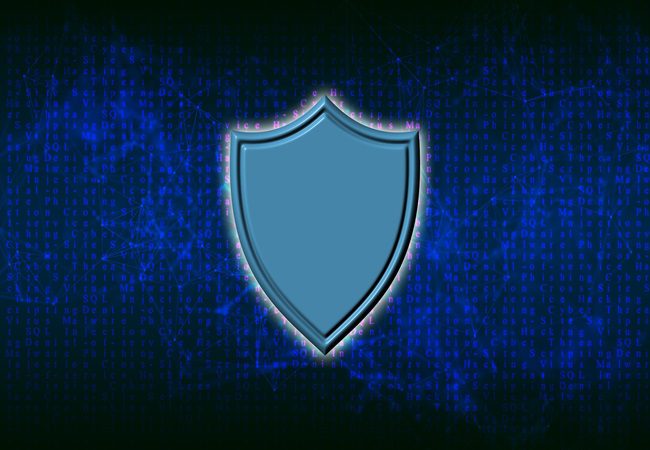Introduction:
In the rapidly advancing digital age, the landscape of cybersecurity is in a constant state of flux, with threats evolving at an unprecedented pace. As we step into 2023, it is crucial for individuals and organizations alike to stay informed about the latest cybersecurity challenges and arm themselves with the knowledge needed to navigate this ever-changing terrain.
The Pervasive Nature of Cybersecurity Threats:
Cybersecurity threats have become more pervasive and sophisticated than ever before. In 2023, we are witnessing an alarming increase in the frequency and severity of cyber attacks across various industries. From small businesses to large enterprises, no one is immune to the potential ramifications of a successful cyber breach.
Short sentence transition:
Amid this evolving threat landscape, understanding the key challenges is paramount.
Emerging Technologies Shaping the Battlefield:
One of the critical factors contributing to the escalation of cybersecurity threats is the rapid advancement of technology. In 2023, cybercriminals are leveraging cutting-edge tools and techniques, making it imperative for cybersecurity professionals to stay ahead of the curve.
Short sentence transition:
To combat these threats, organizations must embrace equally advanced security measures.
Artificial Intelligence as a Double-Edged Sword:
Artificial Intelligence (AI) is playing a pivotal role in cybersecurity, both as a defensive tool and as an asset for malicious actors. While AI can enhance threat detection and response, cybercriminals are also harnessing its power to create more sophisticated and evasive attacks.
Short sentence transition:
Striking a balance between AI-driven defense and offense is the key to staying resilient in 2023.
Blockchain’s Impact on Cybersecurity:
Blockchain technology is not just synonymous with cryptocurrencies; it also holds significant promise for enhancing cybersecurity. Its decentralized and immutable nature provides a robust foundation for securing sensitive data and transactions, offering a potential antidote to the vulnerabilities inherent in traditional centralized systems.
Short sentence transition:
As we delve deeper into 2023, organizations should explore the integration of blockchain for heightened cybersecurity resilience.
The Paradigm Shift:
Zero Trust Architecture:
Traditional perimeter-based security models are increasingly proving inadequate in the face of evolving threats. Enter Zero Trust Architecture, a paradigm shift that assumes no trust within or outside the network. This approach challenges conventional notions of security by implementing strict access controls and continuous monitoring.
Short sentence transition:
Embracing Zero Trust Architecture is not just a trend but a necessity in the contemporary cybersecurity landscape.
Ransomware Trends and Countermeasures:
Ransomware remains a formidable threat, with cybercriminals continuously refining their tactics. In 2023, we are witnessing an escalation in targeted attacks, emphasizing the importance of robust backup strategies, employee training, and proactive cybersecurity measures.
Short sentence transition:
Vigilance and preparedness are critical elements in the ongoing battle against ransomware threats.
The Insider Threat:
A Human Element:
While technological advancements are a driving force behind cyber threats, the human element remains a significant vulnerability. Insider threats, whether intentional or accidental, pose a substantial risk. Cybersecurity strategies must encompass not only technological solutions but also education and awareness programs to mitigate these risks effectively.
Short sentence transition:
Balancing technological defenses with a focus on human behavior is pivotal for comprehensive cybersecurity resilience.
Cybersecurity Hygiene:
A Fundamental Practice:
In the complex world of cybersecurity, basic practices can make a significant difference. Cybersecurity hygiene involves adopting fundamental measures such as regular software updates, strong password policies, and multi-factor authentication. These seemingly simple steps can fortify defenses and reduce the risk of falling victim to common cyber threats.
Short sentence transition:
In 2023, adherence to cybersecurity hygiene is the foundation for a secure digital environment.
Navigating Regulatory Challenges:
As the threat landscape evolves, so do regulations governing cybersecurity. Organizations are grappling with an increasingly complex regulatory landscape. Navigating these challenges requires a proactive approach to compliance, with a focus on understanding and implementing the latest regulatory requirements.
Short sentence transition:
Staying abreast of regulatory changes is not only a legal requirement but a strategic imperative for cybersecurity in 2023.
Quantum Computing:
A Double-Edged Sword for Security:
While quantum computing promises unprecedented computational power, it also poses a potential threat to current cryptographic systems. As quantum computers advance, the need for quantum-resistant encryption becomes paramount to ensure the continued security of sensitive data.
Short sentence transition:
The race is on to develop and implement quantum-resistant algorithms to safeguard against the impending era of quantum computing.
Cybersecurity in the Cloud Era:
The migration to cloud-based infrastructure is transforming the way businesses operate, but it also introduces new cybersecurity challenges. In 2023, organizations must prioritize securing their cloud environments, with a focus on data encryption, access controls, and robust incident response plans.
Short sentence transition:
Embracing the benefits of the cloud requires a parallel commitment to securing the digital assets residing within it.
Conclusion:
The evolving landscape of cybersecurity threats in 2023 demands a proactive and multi-faceted approach. Firstly, embracing advanced technologies is essential to stay ahead of the ever-evolving threats. Secondly, fortifying the human element becomes crucial as cybercriminals often exploit human vulnerabilities. Additionally, navigating regulatory complexities is paramount to ensure compliance and bolster overall security. In light of these challenges, it is evident that staying ahead of cyber threats requires a comprehensive and adaptable strategy. As we navigate this dynamic landscape, awareness, education, and a commitment to best practices will be the cornerstones of a resilient cybersecurity posture.





























